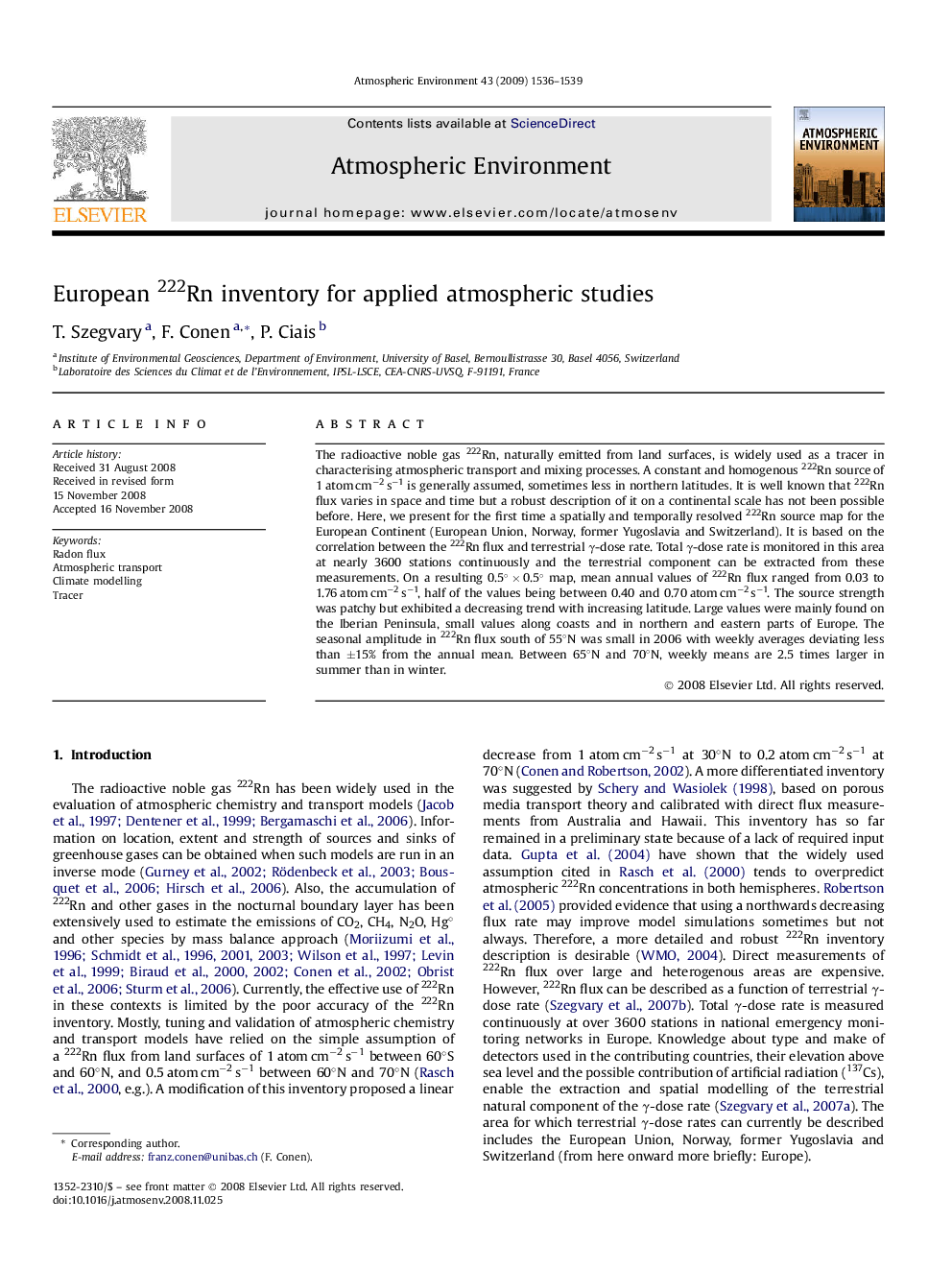| Article ID | Journal | Published Year | Pages | File Type |
|---|---|---|---|---|
| 4441797 | Atmospheric Environment | 2009 | 4 Pages |
The radioactive noble gas 222Rn, naturally emitted from land surfaces, is widely used as a tracer in characterising atmospheric transport and mixing processes. A constant and homogenous 222Rn source of 1 atom cm−2 s−1 is generally assumed, sometimes less in northern latitudes. It is well known that 222Rn flux varies in space and time but a robust description of it on a continental scale has not been possible before. Here, we present for the first time a spatially and temporally resolved 222Rn source map for the European Continent (European Union, Norway, former Yugoslavia and Switzerland). It is based on the correlation between the 222Rn flux and terrestrial γ-dose rate. Total γ-dose rate is monitored in this area at nearly 3600 stations continuously and the terrestrial component can be extracted from these measurements. On a resulting 0.5° × 0.5° map, mean annual values of 222Rn flux ranged from 0.03 to 1.76 atom cm−2 s−1, half of the values being between 0.40 and 0.70 atom cm−2 s−1. The source strength was patchy but exhibited a decreasing trend with increasing latitude. Large values were mainly found on the Iberian Peninsula, small values along coasts and in northern and eastern parts of Europe. The seasonal amplitude in 222Rn flux south of 55°N was small in 2006 with weekly averages deviating less than ±15% from the annual mean. Between 65°N and 70°N, weekly means are 2.5 times larger in summer than in winter.
